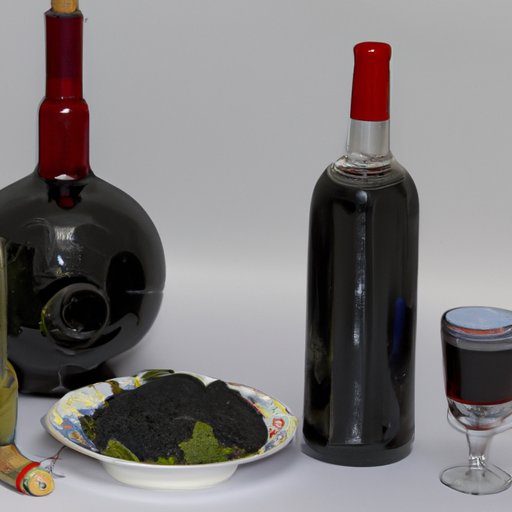Introduction
Cooking wine is a type of wine that is specifically used in food preparation. It is usually fortified with salt, which helps preserve its flavor and prevent it from spoiling. While cooking wine has a longer shelf life than regular table wine, it can still go bad over time if not stored correctly. In this article, we’ll explore the shelf life of different types of cooking wine, the best ways to store it, and how to tell when it has gone bad.
How to Tell When Cooking Wine Has Gone Bad
The most obvious sign of a spoiled bottle of cooking wine is a strange odor or taste. If the wine smells sour or vinegary, or tastes off, then it has likely gone bad. Another sign of spoilage is a change in color—white wines usually darken while reds may turn brown. If you suspect that a bottle of cooking wine has gone bad, it’s best to throw it away rather than risk using it in a recipe.

The Shelf Life of Different Types of Cooking Wine
The shelf life of cooking wine varies depending on the type and how it is stored. Generally speaking, white cooking wines have a shorter shelf life than reds, while sherry and marsala wines can last up to two years. Here’s a breakdown of the shelf life of each type of cooking wine:
White Cooking Wines
White cooking wines such as chardonnay, sauvignon blanc, and pinot grigio will typically last up to six months when stored properly. These wines should be kept in a cool, dark place and tightly sealed when not in use.
Red Cooking Wines
Red cooking wines such as cabernet sauvignon and merlot are more robust and can last up to a year when stored correctly. Like white cooking wines, they should be kept in a cool, dark place and tightly sealed.
Sherry and Marsala Wines
Sherry and marsala wines are made with fortified alcohol, which gives them a longer shelf life than other types of cooking wine. They can last up to two years when stored in a cool, dark place and tightly sealed.

The Benefits and Drawbacks of Using Cooking Wine
Cooking wine is a popular ingredient in many recipes because it adds depth and complexity to dishes. It can also help reduce the need for additional seasonings, which can be helpful for those who are trying to cut back on sodium. However, cooking wine does have some drawbacks. For starters, it contains a significant amount of sodium, which can make dishes overly salty. Additionally, some people may be sensitive to alcohol, so it’s important to take that into consideration when using cooking wine.
The Best Ways to Store Cooking Wine
If you want your cooking wine to stay fresh for as long as possible, it’s important to store it properly. The ideal temperature for storing cooking wine is between 45-55°F (7-13°C). It’s also important to keep the bottles away from direct light, as exposure to light can cause the wine to spoil faster. Finally, make sure that the bottles are tightly sealed when not in use to prevent oxidation.

How to Substitute Cooking Wine in Recipes
If you don’t have any cooking wine on hand, there are a few options for substituting it in recipes. The first option is to use non-alcoholic alternatives such as apple cider vinegar or white grape juice. You can also use other types of alcohol such as gin or vodka, but be aware that these will add their own flavors to the dish.
Tips for Buying Quality Cooking Wine
When buying cooking wine, it’s important to look for bottles that are labeled “cooking wine” or “cooking grade”. These wines tend to be of higher quality than those labeled “table wine”. It’s also a good idea to read labels to check for added ingredients such as sugar, salt, and preservatives. Finally, checking online reviews can be helpful in selecting a good quality cooking wine.
Conclusion
Cooking wine is an important ingredient in many recipes. Understanding the shelf life of different types of cooking wine, the best ways to store it, and how to substitute it in recipes can help ensure that your dishes turn out delicious every time. With proper storage and care, cooking wine can last for several months or even years.


